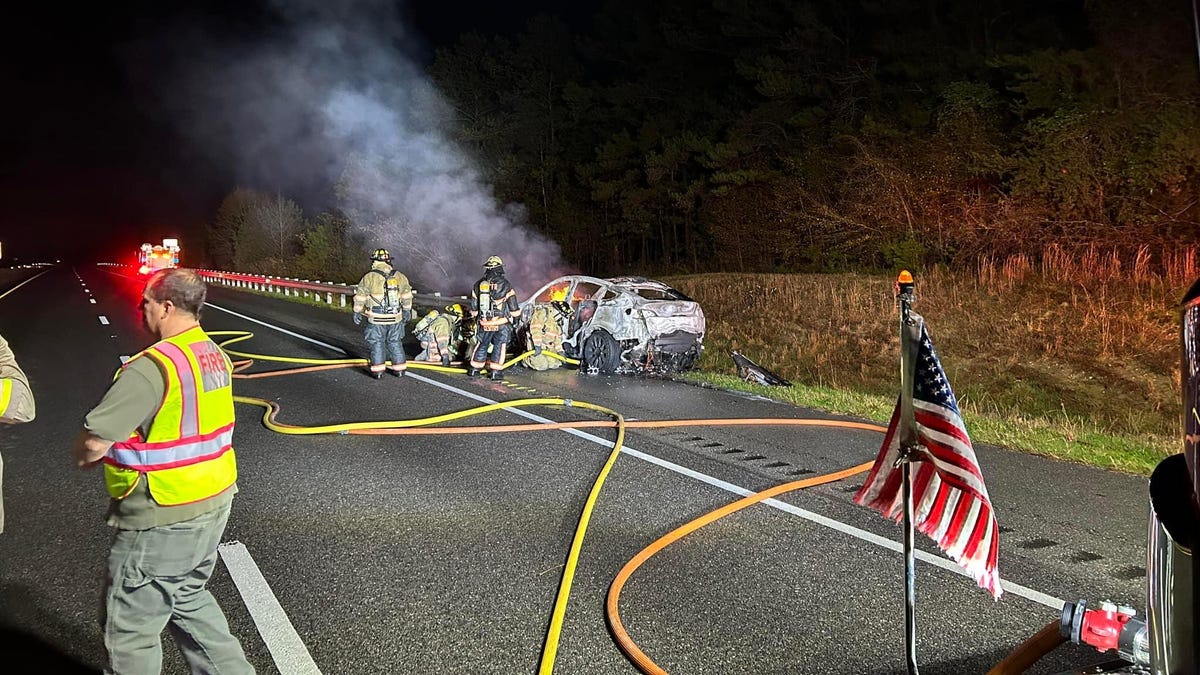A new crash recently in Alabama, but a reminder to something that we all know. Burning Teslas are far more difficult to extinguish than any other car.
It’s pretty clear from the comments that people don’t really know anything about lithium batteries. OP actually knows what their talking about for the most part.
First, lithium batteries contain little to no elemental lithium. Just because the molecule has lithium in it doesn’t mean it’ll react violently with water. Think about table salt. Just because elemental sodium reacts violently with water doesn’t mean table salt will.
Secondly, it’s not an electrical fire. A lithium battery fire is an exothermic, self sustaining chemical reaction.
Thirdly, that chemical reaction is self oxidizing, so you can’t just smother the fire to put it out.
The only way to stop a lithium battery fire is to either let it burn itself out (which is bad because the smoke is highly toxic), or cool it down enough so it can’t self sustain. Water is very good at this.
This is the best comment in this thread. Imo a better option is not to change the cooling fluid, but to have a water connection that allows firefighters to flood the battery instead of just spraying on the vehicle
Perhaps liquid nitrogen or even liquid co2 would be something to try to stop the reaction.
Co2 isn’t liquid on earth. Maybe you’re thinking of supercritical co2, but that turns to gas as soon as it’s released into ambient pressures/temperatures
but that turns to gas as soon as it’s released into ambient pressures/temperatures
Which is what causes it to cool stuff.
FYI Lithium and Lithium-ion are two DIFFERENT battery chemistries entirely. Lithium batteries are primary type cells, meaning not rechargeable (there are some secondary/rechargeable in work currently, but not common yet). You don’t want to put water on a lithium battery due to the lithium metal. However, you typically only find lithium batteries in coin cells (think your watch/fob battery), so big fires are extremely unlikely.
Lithium-ion is a separate chemistry that is a secondary, or rechargeable, type cell. Because the lithium is bonded to a metal oxide (Co-O2, FePO4, NMCO, etc), the lithium is stable and water can be used.
In any case, it’s difficult to use water for EVs because they’re designed to be watertight, so you’re trying to put out a self-sustaining fire/chemical reaction that’s in a box in a box inside several dispersed cells.
This is not an electrical fire, as there’s no sustained voltage. Once the cell fuse pops, you’re only dealing with a single cell internal voltage of 4V (for lithium ion).
I’ve personally burned LFP cells in an inert nitrogen pressure vessel and they very much do burn. They’re “better” than more reactive chemistries like NCA and NMC, but they do still burn (see story of burning teslas). That battery compartment likely has very little air in it, due to the large volume of gas vented during thermal runaway.
Let me know if you have any questions.
Did no one on the truck have Google ?
Or pass 9th grade science ?

